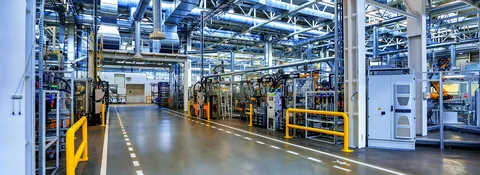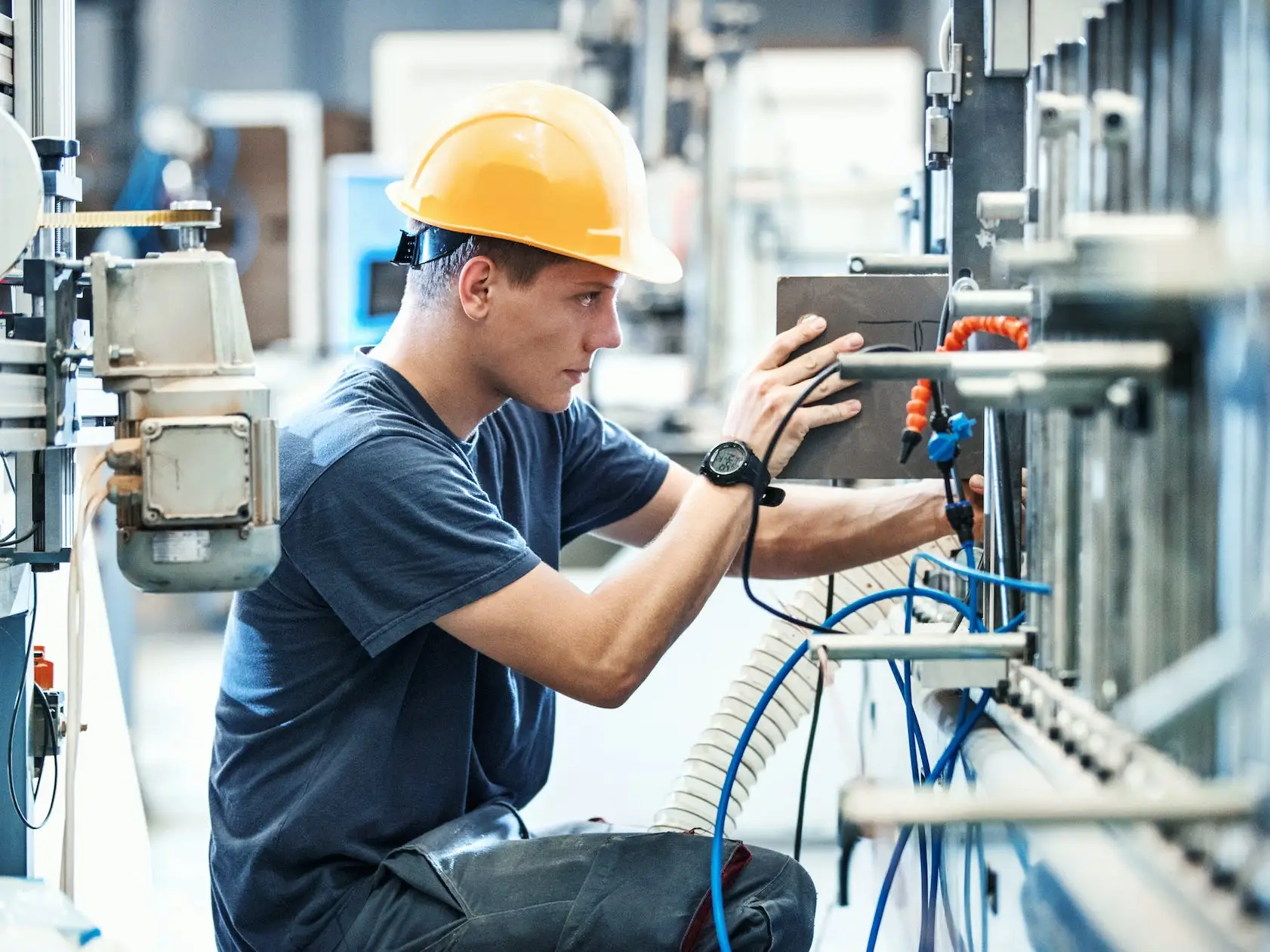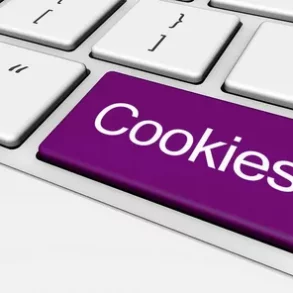Purpose of the Agreement
Description of Services
A plant maintenance agreement is a contract between an owner or operator of a facility (typically referred to as the “Customer”) and a third-party service provider (the “Vendor” or “Contractor”), outlining the terms and conditions for ongoing maintenance services on equipment and/or facilities.
The primary purpose of a plant maintenance agreement is to provide a comprehensive and proactive approach to maintaining the reliability, efficiency, and overall performance of the facility’s systems and equipment, thereby minimizing downtime, reducing energy consumption, and extending the lifespan of these assets.
Typically, the agreement encompasses routine inspections, corrective actions, and preventive maintenance procedures tailored to specific plant operations and requirements. This may involve a regular schedule of visits by authorized technicians, often categorized into levels of response based on the severity or immediacy of needed repairs or adjustments.
The services outlined in such agreements can range from basic upkeep tasks like cleaning and lubricating machinery, adjusting gauges and controls, replacing worn parts, or changing consumables to more advanced activities such as performing tests for efficiency, safety, and environmental compliance, or conducting assessments for operational improvements.
Many plant maintenance agreements include provisions for emergency response. This might involve a dedicated service hotline, guaranteed response times for urgent repairs, and procedures for managing situations that could compromise safety, the environment, or operations.
A critical component of these agreements is performance metrics and evaluation criteria. Regular reviews and assessments are usually built into the contract to measure the Vendor’s adherence to agreed-upon standards, quality of work, responsiveness, communication, and overall customer satisfaction.
The terms of a plant maintenance agreement can vary widely depending on the facility type, size, complexity, industry, location, regulatory requirements, and specific service needs. Some agreements might include provisions for equipment replacement or upgrading over time, or incorporate incentives for achieving or surpassing performance benchmarks set forth in the contract.
The purpose of the Plant Maintenance Agreement is to outline the terms and conditions for maintenance services provided by to its client.
The Plant Maintenance Agreement, also known as an equipment maintenance contract, is a crucial document that outlines the terms and conditions for maintenance services provided by the provider to its client. The primary purpose of this agreement is to establish a mutually beneficial arrangement between the two parties, ensuring that the client’s plant or equipment receives regular maintenance, inspections, and repairs to ensure optimal performance and minimize downtime.
The Purpose of the Plant Maintenance Agreement serves several key functions:
- To define services: The agreement clearly outlines the scope of work, including the specific tasks and responsibilities associated with maintaining the client’s plant or equipment. This includes routine inspections, repairs, replacement of parts, and other maintenance activities.
- Set expectations: By outlining the terms and conditions of the maintenance services, both parties have a clear understanding of what to expect in terms of service delivery, communication protocols, and any associated costs or responsibilities.
- To establish maintenance schedules: The agreement typically includes a detailed maintenance schedule that outlines when inspections, repairs, and other activities will be performed. This helps ensure that the plant or equipment is properly maintained, reducing the risk of breakdowns and downtime.
- To facilitate communication: The Plant Maintenance Agreement serves as a foundation for open and transparent communication between the provider and client. Both parties can rely on clear communication protocols to address any maintenance-related issues or concerns in a timely manner.
- To provide cost certainty: By establishing a fixed fee structure or other pricing mechanisms, the agreement helps clients budget for maintenance expenses, providing cost certainty and reducing financial risks associated with equipment failures.
Overall, the Plant Maintenance Agreement is an essential document that facilitates effective plant maintenance, ensuring optimal performance, reduced downtime, and improved overall productivity. By outlining the terms and conditions of maintenance services, this agreement establishes a mutually beneficial arrangement between the provider and client, fostering trust and cooperation throughout the service delivery process.
Scope of Work
Maintenance Activities
The maintenance activities for plant maintenance agreements are crucial to ensure the smooth operation and longevity of equipment, as well as the overall efficiency of the facility.
A typical plant maintenance agreement may include a range of tasks such as regular inspections, preventative maintenance, repairs, replacements, and upgrades to equipment and systems.
Preventative Maintenance, for instance, involves performing routine checks and maintenance on equipment to prevent breakdowns and minimize downtime. This can include tasks such as oil changes, filter replacements, and cleaning of equipment.
Corrective Maintenance, on the other hand, involves repairing or replacing faulty equipment after a failure has occurred. This type of maintenance is essential for minimizing downtime and restoring normal operations as quickly as possible.
Ongoing Maintenance Schedules are also an important aspect of plant maintenance agreements. These schedules ensure that regular maintenance tasks are performed at the correct intervals to maintain equipment reliability and prevent unexpected failures.
In addition, regular inspections are essential for identifying potential issues before they become major problems. This can include visual inspections, Non-Destructive Testing (NDT), or other specialized techniques to identify potential defects or areas of concern.
The plant maintenance agreement should also include procedures for dealing with emergency situations, such as equipment failures or natural disasters. This may involve having a plan in place for emergency repairs, temporary replacement of faulty equipment, or evacuation procedures.
Finally, it is essential to have clear communication channels and reporting mechanisms in place to ensure that all stakeholders are informed about maintenance activities, schedules, and any changes to the agreement.
This includes regular meetings with facility management and Maintenance Personnel to discuss ongoing projects, address concerns, and review maintenance performance metrics such as mean time between failures (MTBF) and overall equipment effectiveness (OEE).
The plant maintenance agreement should be regularly reviewed and updated to reflect changing circumstances, new technologies, or evolving regulatory requirements.
This may involve revising the agreement to include additional tasks, adjusting schedules to reflect changes in equipment usage or operating conditions, or incorporating new technologies to improve efficiency or reduce costs.
By following these guidelines and maintaining a proactive approach to maintenance activities, organizations can optimize plant performance, minimize downtime, and ensure long-term reliability of critical equipment and systems.
Routine inspections and testing of equipment
The maintenance agreement for plant equipment typically includes routine inspections and testing to ensure optimal performance, prevent breakdowns, and minimize downtime. This can be broken down into several key components:
Scheduled Inspections
Regular checks are performed on critical systems and equipment at predetermined intervals (e.g., daily, weekly, monthly). These inspections may involve visual examinations, meter readings, or functional tests to verify that the equipment is operating within specified parameters.
Scheduled Testing
This involves more comprehensive testing of specific equipment components, such as pumps, valves, and motors. Testing may include performance measurements (e.g., flow rates, pressure drops), vibration analysis, or other diagnostic techniques to identify potential issues before they cause downtime.
Condition Monitoring
Continuous monitoring of equipment conditions using sensors, data loggers, or other devices provides real-time insights into system performance and potential anomalies. This information can be used to trigger corrective actions before a failure occurs.
Corrective Actions
Based on the results of inspections and testing, maintenance personnel take corrective measures to address any issues identified. This may involve replacement of worn or failed components, adjustment of system parameters, or other repairs to restore optimal performance.
Preventive Maintenance
Routine maintenance tasks are performed proactively to prevent equipment failures and minimize downtime. These tasks may include lubrication, filter changes, belt replacements, or other scheduled work orders to maintain the health and longevity of plant equipment.
Techical documentation
All inspection and testing results, along with any subsequent maintenance activities, are thoroughly documented in a centralized database or logbook. This ensures that all stakeholders have access to up-to-date information about the condition and maintenance history of plant equipment.
Performance Tracking
Regular monitoring of system performance against specified metrics (e.g., production rates, energy efficiency) helps identify areas for improvement and informs adjustments to the maintenance strategy as needed.
Maintenance Planning
Athorough analysis of inspection results, testing data, and equipment history guides the development of a comprehensive maintenance plan that prioritizes repairs, replacements, and other activities necessary to maintain optimal plant performance and minimize downtime.
Collaboration and Communication
Regular meetings between maintenance personnel, operations staff, and management ensure that everyone is informed about ongoing maintenance activities, any issues encountered, and planned shutdowns or outages.
Maintenance Budgeting
A well-planned budget for plant maintenance ensures that necessary funds are allocated to support the routine inspections, testing, and corrective actions required to maintain optimal equipment performance.
By incorporating these essential elements into a comprehensive plant maintenance agreement, organizations can optimize their equipment’s performance, prevent costly downtime, and ensure the reliability of critical systems.
Repair and replacement of faulty or wornout components
Adjustment and alignment of machinery and mechanisms
The adjustment and alignment of machinery and mechanisms is a crucial aspect of plant maintenance, as it ensures that equipment operates efficiently, safely, and within specified tolerances. This process involves inspecting and adjusting the mechanical components of machines to ensure proper function and performance.
The alignment of machinery and mechanisms typically begins with a thorough inspection of the equipment’s components, including shafts, bearings, gears, and other moving parts. The inspector checks for signs of wear, misalignment, or damage that could affect the machine’s operation. This may involve using specialized tools, such as laser levels or dial indicators, to measure the precise position and movement of various components.
Once any necessary adjustments have been made to the equipment, a thorough testing process is conducted to verify that the machinery operates within acceptable limits. This may include performance tests to check for efficiency, speed, and accuracy, as well as safety checks to ensure that the machine functions correctly in various modes of operation.
A Plant Maintenance Agreement (PMA) is an essential document that outlines the terms and conditions of maintenance services provided by a third-party provider or the facility’s own maintenance team. This agreement typically includes provisions for routine maintenance, repair, and replacement of equipment components, as well as any necessary upgrades or modifications to keep the equipment current with the latest technology.
The PMA may also outline specific responsibilities for both parties involved in the maintenance process, including the frequency and nature of inspections, reporting requirements, and communication protocols. This document helps ensure that all stakeholders are aware of their roles and obligations regarding plant maintenance, reducing confusion and misunderstandings.
Regular review and update of the PMA is essential to reflect changes in equipment requirements, technology advancements, or other factors that may impact the facility’s operational needs. The agreement should be reviewed periodically to ensure it remains aligned with current industry standards, regulatory requirements, and the facility’s evolving maintenance strategies.
Scheduling
A scheduling plant maintenance agreement is a legally binding contract between an industrial facility or manufacturing company and a contractor or vendor who provides maintenance services for the plant’s equipment and machinery. This type of agreement typically outlines the scope of work, timelines, and responsibilities of both parties to ensure that regular maintenance tasks are completed in a timely manner.
The primary purpose of a scheduling plant maintenance agreement is to establish a framework for managing routine maintenance activities, such as cleaning, inspections, repairs, and replacements. By committing to a scheduled maintenance plan, companies can prevent unexpected equipment failures, reduce downtime, and improve overall operational efficiency.
Key components of a scheduling plant maintenance agreement may include:
- Scope of work: A detailed description of the maintenance tasks to be performed, including specific equipment or systems covered.
- Schedule of services: A breakdown of the maintenance schedule, including frequency and timing of visits.
- Responsibilities: Clear definitions of roles and responsibilities for both parties, including communication protocols and emergency response procedures.
- Billing and payment terms: Details on payment schedules, billing methods, and any applicable penalties or fees.
- Termination clause: Conditions under which the agreement can be terminated or modified.
It’s crucial for companies to carefully review and negotiate scheduling plant maintenance agreements to ensure that they align with their specific needs and operational requirements. This may involve consulting with industry experts, conducting risk assessments, and establishing clear communication channels with maintenance vendors.
Maintenance management systems (MMS) can also be integrated into these agreements to track tasks, schedules, and equipment performance in real-time. This helps companies optimize maintenance activities, reduce costs, and improve overall plant reliability.
Ultimately, a well-structured scheduling plant maintenance agreement is critical for maintaining high levels of equipment efficiency, reducing downtime, and ensuring compliance with industry standards and regulatory requirements.
Maintenance activities will be scheduled on a regular basis, as agreed upon by both parties.
The maintenance schedule will be established and reviewed regularly to ensure that all necessary tasks are completed on time.
Both the plant operator and the maintenance provider will contribute to this process, as agreed upon by both parties.
To facilitate effective communication and collaboration, a formal plan outlining regular maintenance activities will be developed and signed off by both parties.
The maintenance schedule will include the following essential elements:
- Types of tasks to be performed (e.g., routine inspections, repairs, replacements)
- Frequency and duration of each task
- Date and time for completion
- Name of personnel responsible for each task
- Contact information for maintenance provider and plant operator in case of emergency or issues
- Procedure for reporting and documenting maintenance activities
The schedule will be reviewed, updated, and amended as necessary to reflect changes in the plant’s operational needs, equipment upgrades, or new requirements.
Adequate notice will be provided by the maintenance provider to the plant operator prior to any scheduled maintenance activity.
This notice should include:
- Date and time of scheduled maintenance
- Type of task(s) to be performed
- Contact information for maintenance provider and plant operator in case of emergency or issues
The plant operator is responsible for ensuring that:
- Plant shutdowns or other necessary preparations are completed before the scheduled start time.
- Clear access paths are provided to affected equipment and areas for maintenance personnel.
- All safety measures, as outlined in the Plant Maintenance Agreement, are taken during maintenance activities.
The maintenance provider is responsible for:
- Arriving on time and being fully prepared to complete tasks according to the agreed schedule.
- Notifying plant operator in case of any unexpected delays or issues.
- Documenting all maintenance activities as per the established reporting procedure.
The Plant Maintenance Agreement will be reviewed annually, and revisions made as necessary, to ensure that it remains effective in supporting the safe operation of the plant.
Responsibilities
Clients Responsibilities
Clients are expected to fulfill their responsibilities under a Plant Maintenance Agreement in order to ensure the efficient and effective maintenance of their plant or facility. One of the primary responsibilities of clients is to provide clear and accurate information about their equipment, including its age, condition, and any previous repair work that has been done.
This includes providing access to relevant documents such as manuals, diagrams, and repair records, as well as notifying the maintenance provider of any changes to the equipment or facility. Clients should also inform the maintenance provider of any specific requirements or preferences they may have for the maintenance work, such as preferred dates and times for work to be done.
Another key responsibility of clients is to ensure that their personnel are aware of and comply with all relevant safety procedures and protocols during the maintenance work. This includes wearing personal protective equipment (PPE) when required, following lockout/tagout procedures, and staying away from areas where maintenance work is being performed.
Clients should also be prepared to provide any necessary permits or approvals for the maintenance work to be done, such as electrical or gas permits. They should also ensure that all access points to the plant or facility are secure and accessible for the maintenance personnel.
In addition, clients should establish a clear communication channel with the maintenance provider to report any issues or concerns they may have during the maintenance work. This includes reporting any equipment damage or malfunctions, as well as providing feedback on the quality of service provided.
Finally, clients should review and understand their obligations under the Plant Maintenance Agreement, including the scope of work, timelines, and payment terms. They should also be aware of any potential penalties for non-compliance with the agreement, such as fees for missed appointments or failure to provide access to equipment.
Provide access to the plant and equipment for maintenance personnel
The provision of access to the plant and equipment for maintenance personnel is a critical aspect of ensuring that equipment remains functional, efficient, and safe. This is typically achieved through a formal agreement between the facility operator and the maintenance personnel, which outlines specific responsibilities, expectations, and procedures. Here are some key points to consider when implementing a Plant Maintenance Agreement:
Scope of Work
The scope of work should clearly define the tasks and activities that need to be performed by the maintenance personnel to maintain the plant and equipment, including routine inspections, repairs, replacements, and preventative maintenance.
Access Requirements
The agreement should specify the level and type of access required by maintenance personnel to perform their duties, including:
- Clearance procedures for accessing restricted areas;
- Use of personal protective equipment (PPE) such as hard hats, safety glasses, gloves, etc.
- Access control measures to prevent unauthorized access; and
- Procedures for handling sensitive or proprietary information.
Scheduling and Coordination
The agreement should outline procedures for scheduling maintenance activities, including:
- Advance notification of scheduled maintenance;
- Cancellation procedures in case of unexpected delays or changes;
- Coordinating with production personnel to minimize downtime and disruptions.
Training and Certification
The agreement should specify requirements for training and certification of maintenance personnel, including:
- Compliance with industry standards and regulatory requirements;
- Certification programs for specialized equipment or systems; and
- Ongoing training to ensure up-to-date knowledge and skills.
Documentation and Record-Keeping
The agreement should outline procedures for documenting maintenance activities, including:
- Maintenance logs and records;
- Repair and replacement documentation;
- Compliance with regulatory requirements for record-keeping.
Communication and Feedback
The agreement should specify procedures for communication between maintenance personnel, facility operators, and other stakeholders, including:
- Regular meetings and updates;
- Incident reporting and root cause analysis;
- Feedback mechanisms to improve maintenance processes.
The Plant Maintenance Agreement should be regularly reviewed and updated to reflect changes in equipment, operations, or regulatory requirements. By implementing a comprehensive agreement, facility operators can ensure that maintenance personnel have the necessary access, training, and resources to maintain plant and equipment effectively and safely.
Notify of any changes or updates to the facility or equipment
In accordance with the terms of the Plant Maintenance Agreement, it is essential to notify relevant parties of any changes or updates to the facility or equipment. This notification is crucial for ensuring that all stakeholders are informed and up-to-date regarding modifications, upgrades, or replacements.
The responsible personnel should immediately report any changes or updates to the designated contact person or department, as specified in the agreement. This may include but not be limited to, changes to equipment specifications, facility layouts, or operational procedures.
Notifications can be made via email, phone calls, or in-person meetings, whichever is most convenient and effective for all parties involved. It is recommended to maintain a record of all notifications, including the date, time, method of communication, and details of the changes or updates.
The notification should clearly outline the following:
- Type of change: Specify whether it’s a minor modification, major upgrade, or replacement of equipment/facility.
- Reason for change: Provide the reason behind the update, such as improved efficiency, safety enhancements, or regulatory compliance.
- Impact on operations: Explain how the change will affect normal operations, including any downtime required, necessary training, or adjustments to maintenance schedules.
- Estimated completion date: Specify the expected completion date for the update and provide a contingency plan in case of delays.
Once notified, all relevant parties are expected to review and confirm receipt of the notification, ensuring that everyone is aware of the changes and updates made to the facility or equipment. This proactive approach will facilitate smoother transitions and minimize disruptions to ongoing operations.
In addition to notifying relevant parties, it’s essential to document and communicate the updates to affected personnel, including but not limited to:
Operations team
Inform staff responsible for maintaining and operating equipment/facility of any changes or upgrades that may impact their daily tasks.
Maintenance team
Provide maintenance personnel with detailed information regarding the update, including any necessary training or documentation requirements.
Quality control team
Update quality control procedures and standards as necessary to reflect changes made to equipment/facility.
By adhering to this process and maintaining accurate records of all notifications and updates, you can ensure that all stakeholders are informed and aligned with the new or modified facility/equipment conditions.
Responsibilities
The Plant Maintenance Agreement is a critical document that outlines the responsibilities of all parties involved in maintaining and operating a facility, often referred to as a plant.
The primary purpose of this agreement is to ensure that everyone is aware of their roles and obligations regarding maintenance tasks, schedules, and expectations. It helps prevent miscommunication and misunderstandings that can lead to equipment failures or other issues.
A typical Plant Maintenance Agreement would cover the following key areas:
Maintenance Responsibilities
This section outlines the specific duties of each party, including frequency, scope, and timing of maintenance activities. It may also include details on who is responsible for performing routine checks, scheduling repairs, and ordering parts.
Equipment Maintenance
The agreement would specify which equipment requires regular maintenance, when it should be performed, and how often. This may include tasks like lubrication, cleaning, or replacing filters.
Routine Inspections
Regular inspections are crucial to identify potential problems before they become major issues. The agreement should detail who will perform these inspections, what equipment they will cover, and when they should occur.
Emergency Procedures
This section would outline the steps to follow in case of an emergency, such as equipment failure or a system shutdown. It may include contact information for key personnel, procedures for isolating affected areas, and protocols for restoring operations.
Communication and Reporting
The agreement should establish clear lines of communication between parties, including regular meetings, reports, or other means to share information and concerns.
Revision and Updates
It is essential to review the agreement periodically and update it as necessary. This may involve revising maintenance schedules, adding new equipment, or modifying procedures in response to changes in operations or technology.
By clearly outlining responsibilities and expectations, a well-written Plant Maintenance Agreement can help ensure that facilities run efficiently, safely, and effectively, reducing downtime and minimizing the risk of costly repairs or even safety incidents.
Provide skilled and experienced technicians for maintenance services
The provision of skilled and experienced technicians is a critical component of the Plant Maintenance Agreement, ensuring that all maintenance activities are carried out with the utmost efficiency, safety, and quality.
Skilled and experienced technicians have in-depth knowledge and expertise in various areas, including mechanical, electrical, instrumentation, and control systems, as well as specific equipment or machinery type (e.g., boilers, pumps, compressors, etc.). Their extensive experience enables them to troubleshoot complex problems efficiently, identify potential issues before they escalate, and implement effective solutions.
The technicians should have a strong understanding of the plant’s operations, including its process flow, safety protocols, and environmental regulations. They must be familiar with the specific equipment and systems used in the plant, as well as any custom or proprietary technologies employed.
In addition to technical expertise, these technicians should possess excellent communication skills, allowing them to effectively interact with other maintenance personnel, operators, and management to ensure seamless collaboration, coordination, and problem-solving. They must also be proactive in identifying opportunities for improvement and implementing best practices to optimize plant performance and minimize downtime.
It is essential that the skilled and experienced technicians are certified or have relevant qualifications (e.g., OSHA certification, industry-specific certifications, etc.) to ensure they possess the necessary skills, knowledge, and training to perform their duties safely and effectively. Furthermore, they should adhere to the plant’s safety policies, procedures, and protocols to maintain a safe working environment.
The plant maintenance agreement should include provisions for regular training and development of these technicians to ensure they stay up-to-date with new technologies, equipment, and industry developments. This will enable them to continue delivering high-quality services, improve their skills, and contribute to the plant’s overall efficiency, productivity, and competitiveness.
In conclusion, providing skilled and experienced technicians is crucial for the success of any plant maintenance agreement. These technicians should possess a unique combination of technical expertise, industry knowledge, communication skills, and certification, enabling them to deliver high-quality services that meet or exceed the plant’s expectations, ensuring its continued operation, efficiency, and productivity.
Use only approved materials and parts for repairs and replacements
When it comes to plant maintenance, using approved materials and parts is crucial for ensuring the integrity and longevity of equipment. This not only affects the overall performance but also impacts safety and compliance with regulations.
A Plant Maintenance Agreement (PMA) typically outlines the scope of work, responsibilities, and specifications for repairs and replacements. Here are some key aspects to consider when it comes to using approved materials and parts in accordance with a PMA:
Importance of Using Approved Materials and Parts
- The use of substandard or unauthorized components can compromise equipment reliability, performance, and safety.
- It may lead to costly repairs, downtime, and potential environmental hazards due to improper materials or parts.
Approved Materials and Parts: What are They?
- The agreed-upon specifications for materials and parts, as outlined in the PMA or manufacturer’s recommendations.
- These may include specific brands, types, sizes, or grades of materials and components.
How to Ensure Use of Approved Materials and Parts
- Maintain a list of approved vendors and suppliers for parts and materials.
- Verify the authenticity and compliance of incoming materials and parts before use.
- Implement a quality control process to ensure that only approved materials and parts are used in repairs and replacements.
Consequences of Not Using Approved Materials and Parts
- Deterioration of equipment performance, safety risks, or regulatory non-compliance.
- Potential for costly rework, downtime, or fines due to improper repairs or replacements.
By adhering to the guidelines outlined in a Plant Maintenance Agreement and using approved materials and parts, organizations can ensure optimal equipment performance, safety, and compliance.
- Website Privacy Policy – First & Third-Party Cookies + Analytics - August 10, 2024
- Plant Maintenance Agreement - August 7, 2024
- Hire Of Room, Hall Or Other Premises - August 4, 2024










